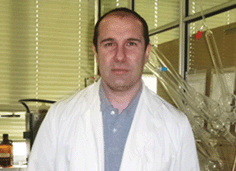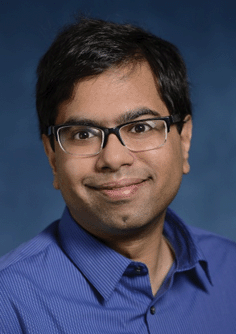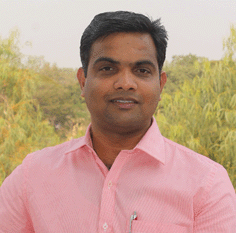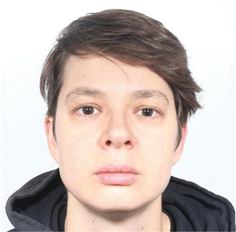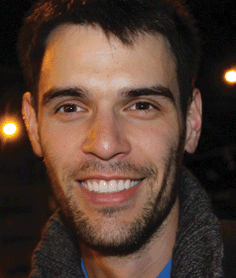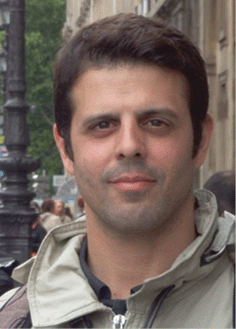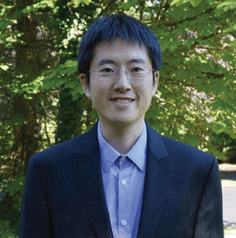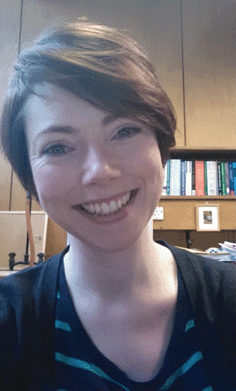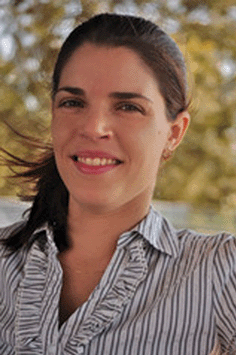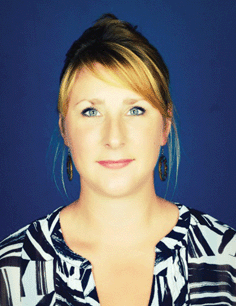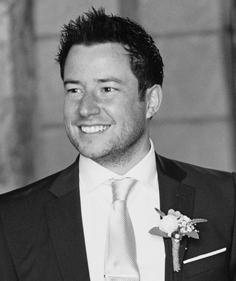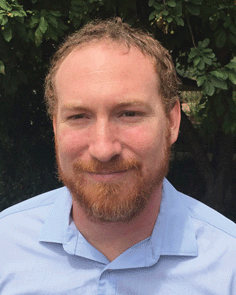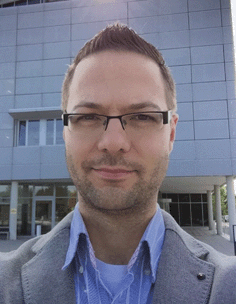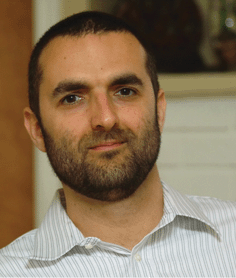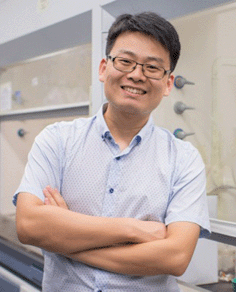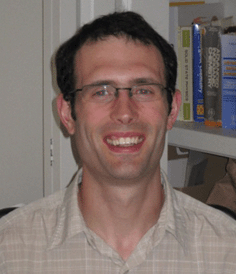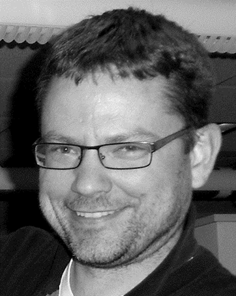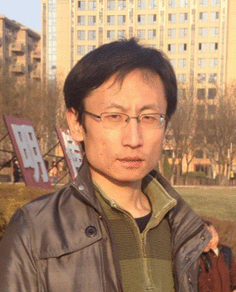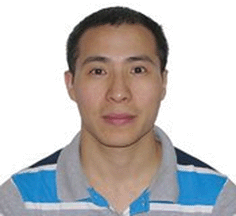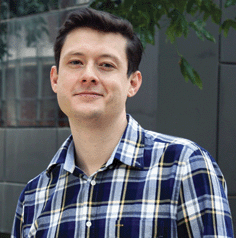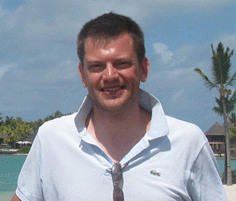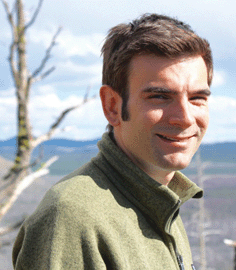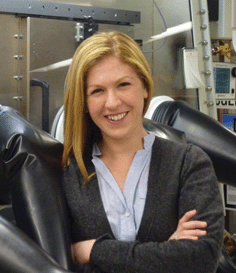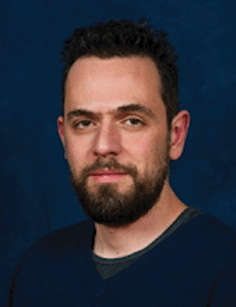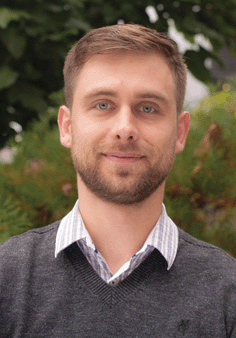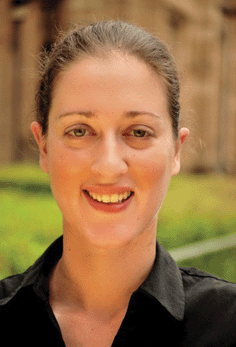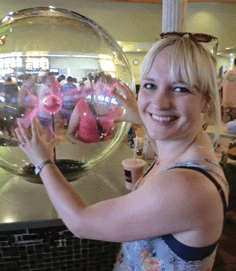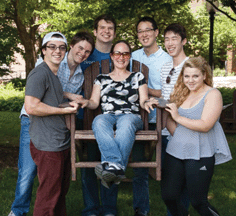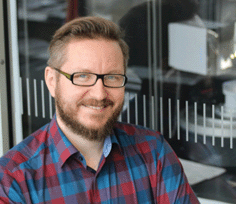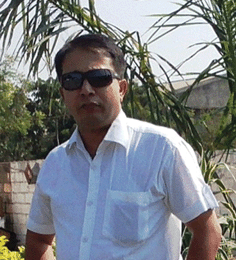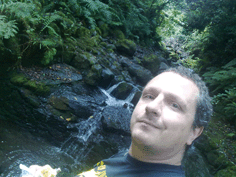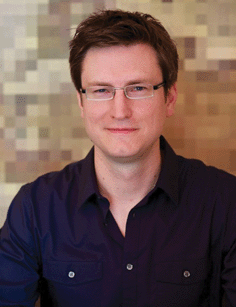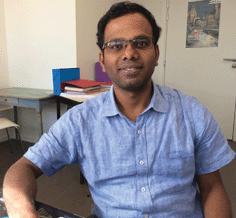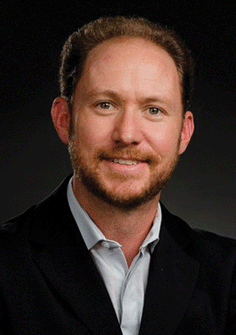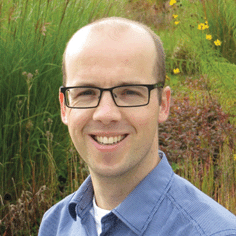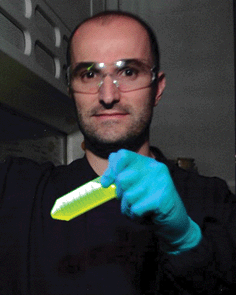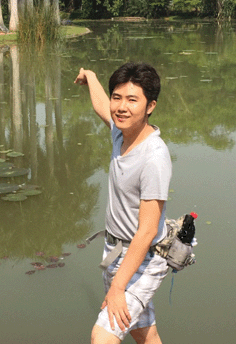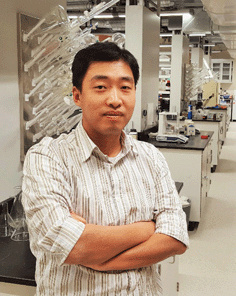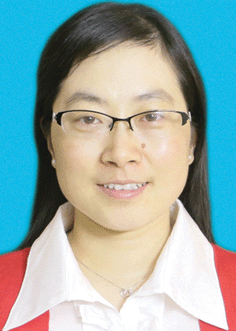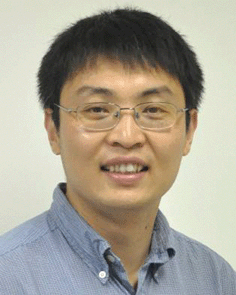DOI:
10.1039/C6CC90290A
(Profile)
Chem. Commun., 2016,
52, 8897-8905
Contributors to the Emerging Investigators issue 2016
José Alemán obtained his PhD under the supervision of Professor Jose Luis García Ruano in 2005. In 2003, he spent six months in the laboratory of Professor Albert Padwa at Emory University, Atlanta, USA. He subsequently carried out postdoctoral research (2006–2008) at the Center for Catalysis in Aarhus (Denmark) with Professor Karl A. Jørgensen. He returned to Spain in 2009 and is currently a ‘Ramón y Cajal’ researcher at the Universidad Autónoma de Madrid (Spain). His research interests include asymmetric synthesis and catalysis. More recently, he received a Consolidator Grant awarded by the European Research Council (see http://www.uam.es/jose.aleman).
Ishan Barman received his undergraduate degree from Indian Institute of Technology Kharagpur and completed his PhD degree (2011) at MIT with Professors Michael Feld and Robert Silbey, where he was a Lester Wolfe Graduate Fellow. After a brief postdoctoral stint, he joined the Department of Mechanical Engineering at Johns Hopkins University as an Assistant Professor with a joint appointment in the Department of Oncology at Johns Hopkins School of Medicine. His principal research interests reside in harnessing the power of vibrational spectroscopy and its plasmon-enhanced counterpart in elucidating complex pathophysiological conditions, especially in the oncological space.
A. T. Biju was born and raised in Cochin, Kerala, India. He received his BSc and MSc from Mahatma Gandhi University, Kerala, India, and his PhD under the guidance of Dr Vijay Nair at the CSIR-NIIST, Trivandrum, India. Subsequently, he has been a post-doctoral fellow with Prof. Tien-Yau Luh at the National Taiwan University, Taipei and an Alexander von Humboldt fellow with Prof. Frank Glorius at the Westfälische Wilhelms-Universität Münster, Germany. In June 2011, he began his independent research career at the CSIR-National Chemical Laboratory, Pune, India. His research focuses on the development of transition-metal-free carbon–carbon and carbon–heteroatom bond-forming reactions using aryne chemistry and N-heterocyclic carbene (NHC) organocatalysis, and their application in organic synthesis.
Eszter Borbas grew up in Hungary and (then still) North Yemen. After obtaining her Diploma at Eötvös Loránd University (Hungary) and her PhD at The Open University (UK), she did post-doctoral work at North Carolina State (USA) and Stockholm Universities (Sweden). In 2010 she started her independent career as a Swedish Research Council assistant professor. She is currently an associate professor at Uppsala University, where her group works on luminescent lanthanide complexes for multiplex imaging and synthetic heterocyclic chemistry to access functionalized hydroporphyrins. In her free time she enjoys reading, running, climbing, and trekking in places without cell phone coverage.
Matthew Brown is currently head of the liquid interfaces group in the Department of Materials at ETH Zürich. He studied undergraduate chemistry at the University of Ottawa and received his PhD from UC Irvine in 2008 under the supervision of Prof. Hemminger. After an Alexander von Humboldt postdoctoral fellowship at the Fritz Haber Institute in the department of Prof. Freund he moved to ETH first as a postdoctoral fellow and in 2012 was promoted to group leader. His research group’s interests focus on quantitative characterization of the liquid–air and liquid–nanoparticle interfaces for applications in environmental science and soft-matter physics.
Romen Carrillo was born in paradisiac Tenerife, where he received his PhD in chemistry (2007). Then he spent some time in Professor Colin Nuckolls' group at Columbia University, New York (USA), right before he moved to the University of Edinburgh (UK) where he worked in Professor David Leigh's group. In 2010, he returned to Spain and joined the Instituto de Productos Naturales y Agrobiología (IPNA-CSIC). He is currently working at Instituto Universitario de Bio-Organica (IUBO), where his research interests are greener synthetic methodologies, supramolecular functional systems and novel approaches to medicinal chemistry.
Changle Chen obtained his BS degree from University of Science and Technology of China in 2005. After receiving his PhD from the University of Chicago working with Prof. Richard Jordan in 2010, he moved to Northwestern University to start postdoctoral studies with Prof. Tobin Marks. After some time at the Celanese Corporation, he started his independent career as a professor at USTC in 2013. His current research focuses on the development of organometallic complexes and new strategies for olefin polymerization and copolymerization. His notable awards include the Albert J. Cross Prize, the American Chemical Society DIC Young Investigator Award and the IUPAC Prizes – Honorable Mention.
Serena Corr is a lecturer at the School of Chemistry at the University of Glasgow. She obtained her BA (2002) and PhD (2007) in Chemistry from Trinity College Dublin. In 2007, she began working as a postdoctoral researcher with Professor Ram Seshadri at the University of California, Santa Barbara. After a lectureship at the University of Kent, Serena joined Glasgow as a lecturer in Physical Chemistry in January 2013. Her research focuses on the design, synthesis and characterization of functional nanomaterials in particular for applications in energy storage, with an emphasis on understanding their intimate structure–property interplay.
Deanna D'Alessandro received her PhD in Chemistry from James Cook University in 2006 under the supervision of Professor Richard Keene, and undertook a postdoctoral position with Professor Jeff Long at the University of California, Berkeley from 2007–2009 as a Dow Chemical Company Fellow of the American-Australian Association and a Royal Commission for the Exhibition of 1851 Research Fellow. In 2011 she received an Australian Research Council QEII Fellowship which allowed her to start building her own research group at the University of Sydney, focusing on the electronic and optical properties of MOFs and their applications in energy-related fields. She was chosen as one of the winners of the
ChemComm Emerging Investigator Lectureship in 2015.
Aude Demessence is a CNRS researcher at the Institute of Catalysis and Environment in Lyon, France. She obtained her PhD in 2006 from University of Strasbourg, under the guidance of Dr P. Rabu. Then, she did her first postdoc at Berkeley University with Prof. J. R. Long and the second one jointly at Versailles and Paris Universities with Dr C. Serre and Dr C. Sanchez. Her research focuses on hybrid materials, mainly assembly of nanoparticles, thanks to a young researcher grant (ANR JCJC), and coinage metal thiolate compounds for catalysis and luminescence. Her passions for chemistry and traveling brought her, for few months, to Kyoto University in 2014 and IIT-Bombay in 2015.
Rob Elmes graduated from the University of Dublin, Trinity College in 2007 before being awarded an IRCSET Embark Scholarship to undertake his PhD under the supervision of Prof. Thorri Gunnlaugsson. After a short postdoctoral tenure at the Trinity Biomedical Sciences Institute in Dublin, Rob moved to the University of Sydney under the guidance of Prof. Kate Jolliffe where he was involved in the development of new platforms for the recognition, sensing and transport of biologically relevant anions. In late 2014, Rob returned to Ireland taking up a position at Maynooth University where he is currently a Lecturer in Organic Chemistry within the Department of Chemistry. Rob's research interests lie in the fields of Supramolecular Chemistry and Chemical Biology and the group is designing responsive biomimetic materials as drug delivery vehicles, diagnostic tools and environmental sensors.
Dominic Hare completed his PhD in analytical chemistry at the University of Technology Sydney in 2009, and now divides his time between UTS and the Florey Institute of Neuroscience and Mental Health, where he heads the Analytical Neurochemistry Development Group. He was an Australian Postdoctoral (Industry) Fellow, and is currently a Chancellor's Postdoctoral Fellow and Senior Lecturer at UTS. His research passion is studying the role of metals in neurodegenerative diseases and wider biology. He is a Fellow of the RSC, and in his spare time runs a light-hearted website (http://ferrumblogger.com) that attempts to make metals in biology more digestible to the everyday web trawler.
Thomas Hermans is an assistant professor at the University of Strasbourg and group leader of the Laboratory of Nonequilibrium Complex Systems (Laboratoire des systèmes complexes hors équilibre, http://www.hermanslab.com) at the Institut de Science et d'Ingénierie Supramoléculaires (France). He studied Chemical Engineering and Chemistry at the Eindhoven University of Technology (The Netherlands, 2000–2006), followed by a PhD at the faculty of Biomedical Engineering at the same university under the supervision of Prof. E. W. (Bert) Meijer (2006–2010). Next, Dr Hermans joined the group of Prof. Bartosz Grzybowski at Northwestern University (USA, 2010–2013) supported by a HFSP fellowship. At the end of 2015 he obtained his habilitation degree from the University of Strasbourg. The main goal of the Hermans lab is obtaining adaptive, self-healing, self-replicating and ultimately living systems (and materials) using molecular self-assembly under far-from-equilibrium conditions.
Todd W. Hudnall (b.1979), originally an architecture major, quickly changed his major to chemistry and earned his BS in 2004 from Texas State University. His passion for main group chemistry began when he joined the group of François Gabbaï at Texas A&M where he earned his PhD in 2008. During his postdoctoral work under the direction of Christopher Bielawski at the University of Texas, he helped pioneer a new class of electron-poor carbene ligands. Todd has been an Assistant Professor of Chemistry at Texas State University since 2010, where his research has married his love of carbene and main group chemistry. He was recently recognized with awards from the NSF, the ACS PRF, and the Research Corporation for Science Advancement, and his boron tattoo was also featured in C&E News. In his spare time, Todd enjoys being outdoors and spending time with his wife Hayley.
After studying chemical engineering at University Politehnica of Bucharest between 1995 and 2000,
Vlad Iluc was employed for two years at Strem Chemicals in Newburyport, MA. In 2002, he began his PhD career at the University of Chicago, where he worked under the guidance of Professor Gregory Hillhouse. His research focused on metal–ligand multiple bonds in nickel complexes supported by chelating bisphosphine ligands. During 2008–2011, Dr Iluc was a postdoctoral fellow at the California Institute of Technology, where he worked with Professor Robert Grubbs and focused on C–H activation reactions catalyzed by iridium complexes. Professor Iluc joined the Chemistry and Biochemistry Department at University of Notre Dame in summer 2011. His research interests are late transition metal carbenoids, ligand design and small molecule activation.
Wei Jiang received his BSc degree in 2004 from Xi'an Jiaotong University and his MSc degree in 2007 from Nankai University with Prof. Yu Liu. He was awarded the Schering prize for his PhD work which he finished in 2010 at Freie Universität Berlin with Prof. Christoph A. Schalley. After postdoctoral research with Prof. Julius Rebek Jr at the Scripps Research Institute in 2011 and 2012, he started his independent research career at the Department of Chemistry, South University of Science and Technology of China (SUSTC). His research is focused on the design and synthesis of novel macrocyclic hosts and their applications in catalysis, sensing, and smart materials.
Euan Kay received his MChem from the University of Edinburgh in 2002 and completed his PhD there in 2006 under the supervision of Professor David A. Leigh FRS. He was the recipient of a 2007 IUPAC Prize for Young Chemists. Following postdoctoral work in Edinburgh, he joined Professor Moungi Bawendi at MIT (2008–2010). He then moved to the University of St Andrews as a Royal Society of Edinburgh/Scottish Government Personal Research Fellow (2011–2015) and is now a Lecturer in Chemistry there. Research in the Kay group focuses on translating dynamic and stimuli-responsive (supra)molecular systems into the nanoworld.
Kevin Kittilstved started his current position as an Assistant Professor in the Department of Chemistry at the University of Massachusetts Amherst in 2011. Kevin is a graduate of Gonzaga University (BS 2001) and the University of Washington (PhD 2006), and continued his training as a post-doc at the Université de Genève with Andreas Hauser and the University of Washington with Daniel Gamelin. In 2015 he received a National Science Foundation CAREER Award. His current research program is focused on controlling impurities and defects in multifunctional inorganic materials and molecular clusters for solar energy and spin-based electronics applications.
Pengfei Li is now a professor at Frontier Institute of Science and Technology at Xi'an Jiaotong University. He earned his BS and MS degrees in chemistry from Shanxi Normal University (2001) and Nankai University (2004), respectively. After two years of experience in the drug industry, he continued his academic research at the Helmholtz Center for Infection Research (HZI) and later at University of Heidelberg, where he finished his PhD thesis under the supervision of Prof. Dirk Menche. In early 2010, he joined Prof. Steve Buchwald's group at MIT as a postdoctoral associate. In November 2011 he started his independent research at Xi'an, the historical city in the middle of China. His current research includes synthetic organoboron chemistry, natural product synthesis and continuous-flow chemistry.
Xin-Yuan Liu received his PhD degree from the University of Hong Kong (HKU) in 2010 and became a post-doctoral Fellow in HKU and then the Scripps Research Institute from 2010 to 2012. Dr Liu joined the South University of Science and Technology of China as an Associate Professor in 2012. His research interests are focused on the design of homogeneous and heterogeneous catalysts, their applications in the asymmetric functionalization of unactivated alkenes and alkynes, and the application of chemistry in medicinal chemistry. He has published more than forty research papers in international journals, including
Nat. Commun.,
J. Am. Chem. Soc.,
Angew. Chem.,
Chem. Commun. and so on. His research papers have been cited up to 1300 times.
Carlos Martí-Gastaldo (Universidad de Valencia; UV) studied at the UV, where he worked with Eugenio Coronado and José Ramón Galán-Mascarós for his PhD (2009). After post-doctoral research with Matthew J. Rosseinsky at the University of Liverpool (2010–2013), and a URF from the Royal Society at Liverpool (2013–2014), he was made a Ramón y Cajal Fellow at the UV in 2014. Martí-Gastaldo's research is currently focused on metal–organic frameworks for energy transport, conversion and storage.
Ruaraidh McIntosh completed his PhD at Heriot-Watt University under the supervision of Prof. Alan Welch. He received the University Thesis Prize and the RSC Laurie Vergnano Award for this work before undertaking postdoctoral studies at the Ohio State University with Prof. Malcolm Chisholm, University of Manchester with Prof. Richard Winpenny and Prof. Eric McInnes, and in Edinburgh with Dr Scott Dalgarno and Prof. Euan Brechin. He remains at Heriot-Watt University as a Research Fellow where his research interests include supramolecular chemistry and catalysis. Away from work Ruaraidh can usually be found in the kitchen where he has found a secondary application for his redoubtable skills in burning and profanity.
Alexander Miller is an Assistant Professor of Chemistry at the University of North Carolina at Chapel Hill. After a formative research experience with Prof. Gregory Hillhouse at the University of Chicago culminated in a BS in 2005, he obtained his PhD in 2011 at Caltech under the guidance of Prof. John Bercaw. Alex continued his training with Prof. Karen Goldberg and Prof. Jim Mayer as a Dreyfus Environmental Postdoctoral Fellow at the University of Washington, Seattle, before joining the Carolina faculty in 2012. The Miller Group is developing strategies in molecular catalysis to facilitate the efficient synthesis of fuels and chemicals from renewable resources.
Jill E. Millstone grew up in Jacksonville, Florida, and attended Carnegie Mellon University where she received a BS in Chemistry and English. She completed her PhD in materials chemistry at Northwestern University under the direction of Chad Mirkin, and post-doctoral research at the University of California, Berkeley in the laboratories of Jean Fréchet and Paul Alivisatos. Since joining the University of Pittsburgh, she has received awards including the National Science Foundation CAREER Award, the ACS Unilever Award and the Cottrell Research Scholar Award. Her group studies the chemical mechanisms underpinning metal nanoparticle synthesis, surface chemistry, and optoelectronic performance.
Haralampos N. Miras obtained his PhD in 2005 under the supervision of Prof. T. A. Kabanos (Ioannina, Greece). Subsequently, he joined the group of Prof. R. G. Raptis (Puerto Rico, USA), before moving to Glasgow with Prof. L. Cronin. In 2010 he was awarded a 5-year Royal Society of Edinburgh/Marie Curie fellowship. In 2013, he began his current position as lecturer at the University of Glasgow. Harry's research focuses on the understanding of fundamental processes in the self-assembly of supramolecular chemical systems, the elucidation of mechanisms as well as on the investigation of the structure–function correlation and surface organization.
Markus Müllner studied polymer and colloid chemistry at the University of Bayreuth, Germany where he also received his PhD under the supervision of Prof. Axel H. E. Müller in 2012. He went on to join Prof. Frank Caruso's group at the University of Melbourne, Australia as a postdoctoral fellow. In 2015, Markus became a lecturer with the School of Chemistry at the University of Sydney, Australia and joined the Key Centre for Polymers and Colloids. His research focuses on the synthesis of elaborate polymeric architectures, such as cylindrical polymer brushes, and their applications in template chemistry and nanomedicine.
After undergraduate and Masters studies at the University of Sydney,
Elizabeth New completed her PhD at Durham University in 2009. Following a period at the University of California (Berkeley) as a Royal Commission for the Exhibition of 1851 Postdoctoral Fellow, Liz returned to the University of Sydney in 2012, where she is now a Senior Lecturer. Her research is focused on the development of small molecule fluorescent and magnetic resonance probes for the study of biological systems. She is passionate about supporting other early career researchers, and serves on the executive of the Australian Academy of Science's Early- and Mid-Career Researcher Forum.
Alison Parkin originally hails from East Yorkshire and attended South Hunsley School. She spent 12 fantastic years at the University of Oxford (2000–2012), studying as a MChem and DPhil (PhD) student at Jesus College, before working as a Merton College Junior Research Fellow. For her DPhil and Fellowship she worked in Professor Fraser Armstrong's research group where the interest in electrochemistry and hydrogenase biochemistry which inspired the paper in this collection was nurtured. In 2012 Alison returned to ‘God's own county’ as an Anniversary Research Lecturer in the Department of Chemistry at the University of York where her group focuses on understanding biological redox-chemistry.
Katherine Plass (shown in the center of the photo) leads a team of undergraduate student scientists in the Chemistry Department at Franklin & Marshall College (shown above left to right: Marshall Tomat, David Mix, Nathaniel Freymeyer, Christian Kim, Alex Kim, and Zheni Georgieva). Together we explore the surface and solid-state behavior of nanoparticles of interest for optoelectronic applications. Prof. Plass joined Franklin & Marshall College in 2008 after a post-doctoral experience at the California Institute of Technology with Nathan S. Lewis and a doctoral experience at the University of Michigan with Adam J. Matzger.
Alexander Pöthig graduated in chemistry at TU Dresden in 2007. After a research stay at UC Berkeley with Prof. Dirk Trauner he moved back to Germany and received his PhD in 2012 at the TU Dresden with a thesis on transition metal complexes as emitters for optical devices. In 2011 he became a researcher at the TU München and subsequently a subgroup leader at the Chair of Inorganic Chemistry of Prof. W. A. Herrmann. Since 2013 he has been the head of the single-crystal XRD department of the newly founded Catalysis Research Center of the TU München and since 2014 he has been pursuing projects as an independent researcher. He is interested in the design of N-heterocyclic and carbocyclic carbene ligands for multi-centred complexes, the electronic characterization of transition metal complexes for catalytic applications and the structural determination of small molecules using single-crystal XRD.
Kamalesh Prasad obtained his MSc in 1999 and PhD (CSIR-Central Salt & Marine Chemicals Research Institute) in 2005. He joined CSIR-CSMCRI in 2000 as a Junior Scientist and is presently working as a Principal Scientist and as an Associate professor in AcSIR. He is a recipient of the CSIR-Young Scientist Award 2010 for his research in the area of seaweed polysaccharides. He has visited Kagoshima University, University of Leicester and INSA-Lyon France as a visiting scientist. He is a member of the Royal Society of Chemistry and received a CSIR-Raman-Research Fellowship. The research interests of his group include dissolution and functionalization of natural polymers using new solvent systems, extraction of polysaccharides and bioactive molecules, rheology of gels and graphene.
Martin Prechtl, named Humboldtian/AvH and Heisenbergian/DFG, received the NRW Returnee Award 2009 (1.25M€) and works at the University of Cologne as Privatdozent. He acts as an editor for Wiley, RSC and DeGruyter. Besides other awards, he holds the Ernst-Haage-Prize 2014 (MPI-CEC) for his contribution to hydrogen storage (
Nat. Commun., 2014, PCT-patent). His group develops molecular and nanoscale (de)hydrogenation catalysts and is known for H
2-generation from methanol/formaldehyde at room temperature. Before Cologne he performed research in Wuppertal, Bridgetown, São Paulo, Aachen, Mülheim/Ruhr, Porto Alegre and Berlin. He enjoys outdoor activities, sports, cooking, languages and their derivatives like Mirandese, Papiamento, Talian or Bajan.
Christoph Rademacher is currently a group leader at the Max Planck Institute of Colloids and Interfaces (MPI-CI) in the Department of Biomolecular Systems in Potsdam, Germany. He received his doctorate degree in NMR spectroscopy under the supervision of Prof. Thomas Peters at the University of Lübeck. After postdoctoral research in the field of Glycoimmunology with Prof. James C. Paulson at the Scripps Research Institute, La Jolla (USA), he started his independent career at the MPI-CI heading the “Structural Glycobiology” group. His research focuses on the development and application of novel molecular probes to understand the role of carbohydrates in immune cell regulation.
Gopalan Rajaraman (born in Thanjavur, India) received his PhD at the University of Manchester, UK under the supervision of Prof. R. E. P. Winpenny and Dr E. J. L. McInnes in 2004. Afterwards, he undertook postdoctoral stays at the University of Heidelberg, Germany (2005–2007) in the group of Prof. P. Comba and University of Florence, Italy in the group of Prof. D. Gatteschi (2007–2009). In December, 2009 he joined IIT Bombay, India as an assistant professor and became an associate professor in 2014. His research focuses on employing electronic structure methods to understand structure, properties and reactivity of molecules possessing unpaired electrons (open-shell systems). In addition to modelling molecular magnets, his group also actively pursues research in the area of modelling bio-mimic reactions catalysed by high-valent metal–oxo/imido complexes.
Michael J. Rose is an Assistant Professor in the Chemistry Department at the University of Texas at Austin. His research group is especially interested in the development of solar fuel conversion devices based on integrating light absorbers (such as silicon and gallium phosphide) with catalysts for hydrogen generation and carbon dioxide reduction (both molecular and nanoparticle catalysts). The Rose research group is also interested in bio-inspired chemistry, especially in the area of hydrogen (H
2) and nitrogen (N
2) utilization by iron-based catalysts. Such work explores novel, biomimetic iron–carbon bonding motifs to stabilize highly reactive intermediates for H
2 and N
2 activation.
Maarten Smulders obtained his PhD degree in 2009 from the Eindhoven University of Technology (NL) for research undertaken in the group of Professor Bert Meijer. After postdoctoral positions at the University of Cambridge (UK) and the University of Twente (NL), in 2013 he took up a position as assistant professor in the Laboratory of Organic Chemistry at the Wageningen University (NL). His current research interests lie in the area of supramolecular chemistry, dynamic-covalent chemistry and polymer chemistry.
Marc Vendrell graduated in Chemistry at the University of Barcelona in 2007. He then joined the Singapore Bioimaging Consortium to work with Young-Tae Chang in synthetic fluorophores for optical imaging. In 2012 he started his independent career as an MRC Academic Fellow at the University of Edinburgh. He is a Lecturer in Biomedical Imaging and his main research interest is the development of activatable fluorophores for imaging cancer and inflammation. He has over 50 publications in chemical biology and imaging, including 8 international patents. His research has been recognised with several awards: SEQT Young Investigator Award (2007), SBIC Chairman's Prize (2010) and the Marie Curie CIG (2013).
Tuo Wang has been an associate professor in chemical engineering in Tianjin University since August 2012. He received his BS (2006) from Tianjin University and PhD (2010) from the University of Texas at Austin, both in chemical engineering. After gaining another year of research experience as a postdoctoral associate, he joined Novellus Systems Inc. (currently Lam Research Corp.) as a PECVD process development engineer in Tualatin, Oregon. His research included ALD of high-
k dielectrics and perovskite thin films, as well as PECVD of carbon-based etching hardmasks. His current research focuses on thin film deposition for energy conversion and storage systems.
Yan Xia received his BS from Peking University and MSc from McMaster University, both in chemistry. He obtained his PhD with Prof. Bob Grubbs and Prof. Julie Kornfield at Caltech in 2010, synthesizing and studying cyclic and brush polymers. He was then a senior chemist at the Dow Chemical company for one and a half years to tackle industrial challenges before becoming a postdoc with Prof. Brad Olsen at MIT. In the summer of 2013, he joined the faculty of Chemistry at Stanford University as an assistant professor. His group is interested in developing efficient reactions and designing new molecular motifs and polymers to create novel soft materials.
Liyun Zhang studied chemistry at University of Science and Technology of China and received her PhD degree in 2009. After two years of postdoctoral research, she was appointed assistant professor at Hefei Institutes of Physical Science, Chinese Academy of Sciences and promoted to associate professor in 2012. After one year of visiting research at the National University of Singapore, she started an independent group in 2014. Her research interests include (i) metalloenzymes and their application in renewable energy generation; and (ii) development of fluorescent probes to detect fundamental DNA and proteins.
Yong Sheng Zhao received his PhD degree in 2006 at Institute of Chemistry, Chinese Academy of Sciences (ICCAS). After that, he joined the University of California at Los Angeles (UCLA) and Northwestern University as a postdoctoral fellow. In 2009, he returned to ICCAS as a Professor of Chemistry. His research interests are focused on organic nanophotonic materials and devices, including the controllable synthesis of low dimensional organic materials, comprehensive investigation of the photophysical and photochemical processes involved in the materials, and the design, fabrication and performance optimization of photonic/optoelectronic nanodevices. He was chosen as one of the winners of the
ChemComm Emerging Investigator Lectureship in 2015.
|
| This journal is © The Royal Society of Chemistry 2016 |

